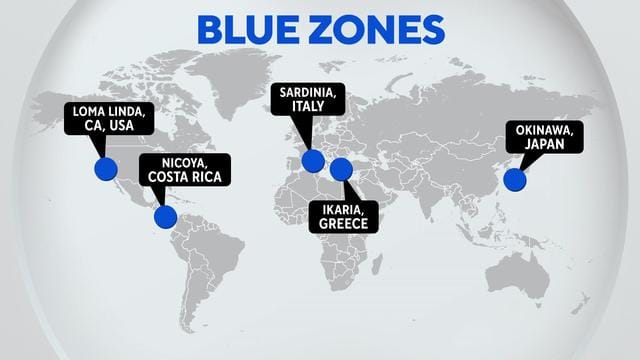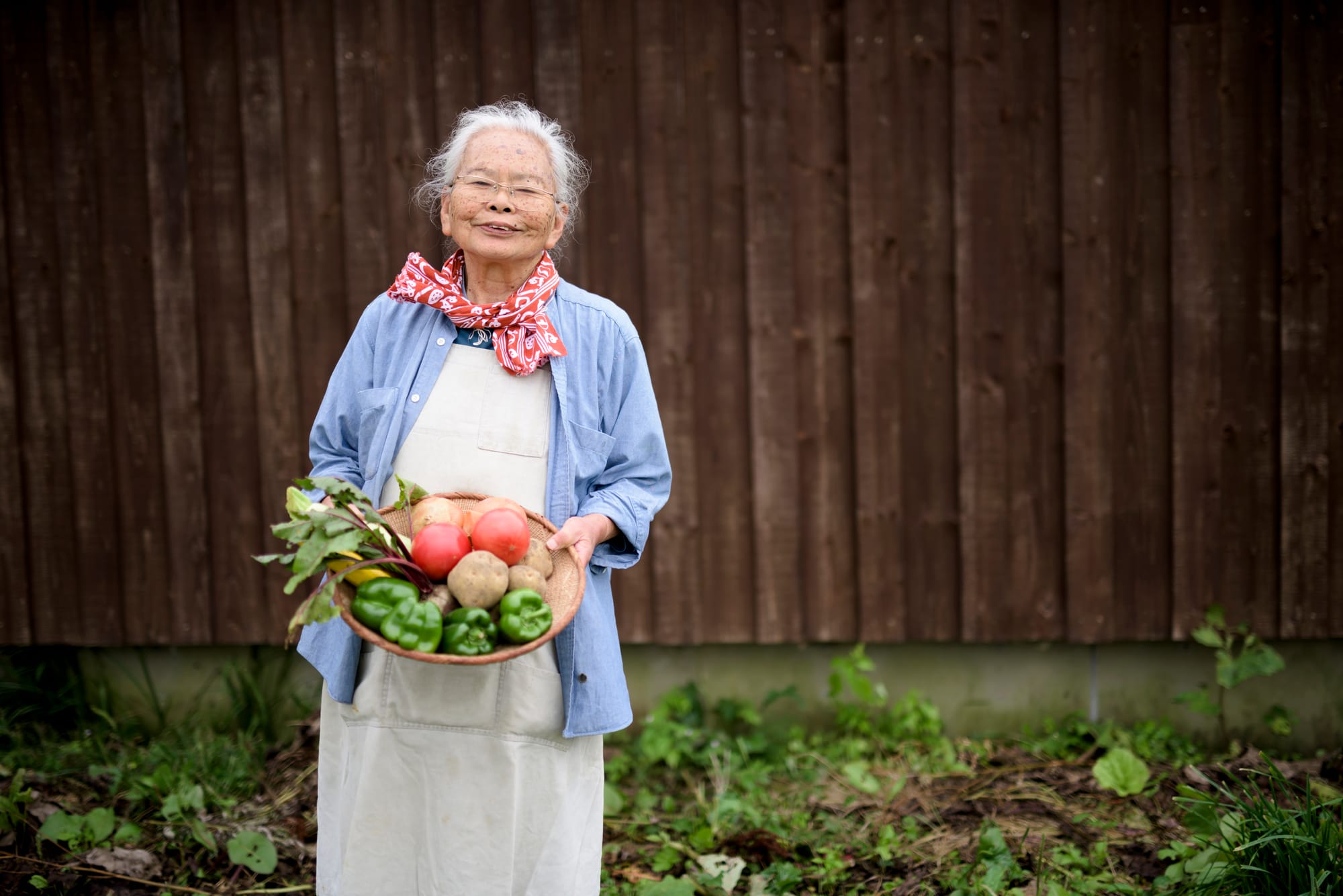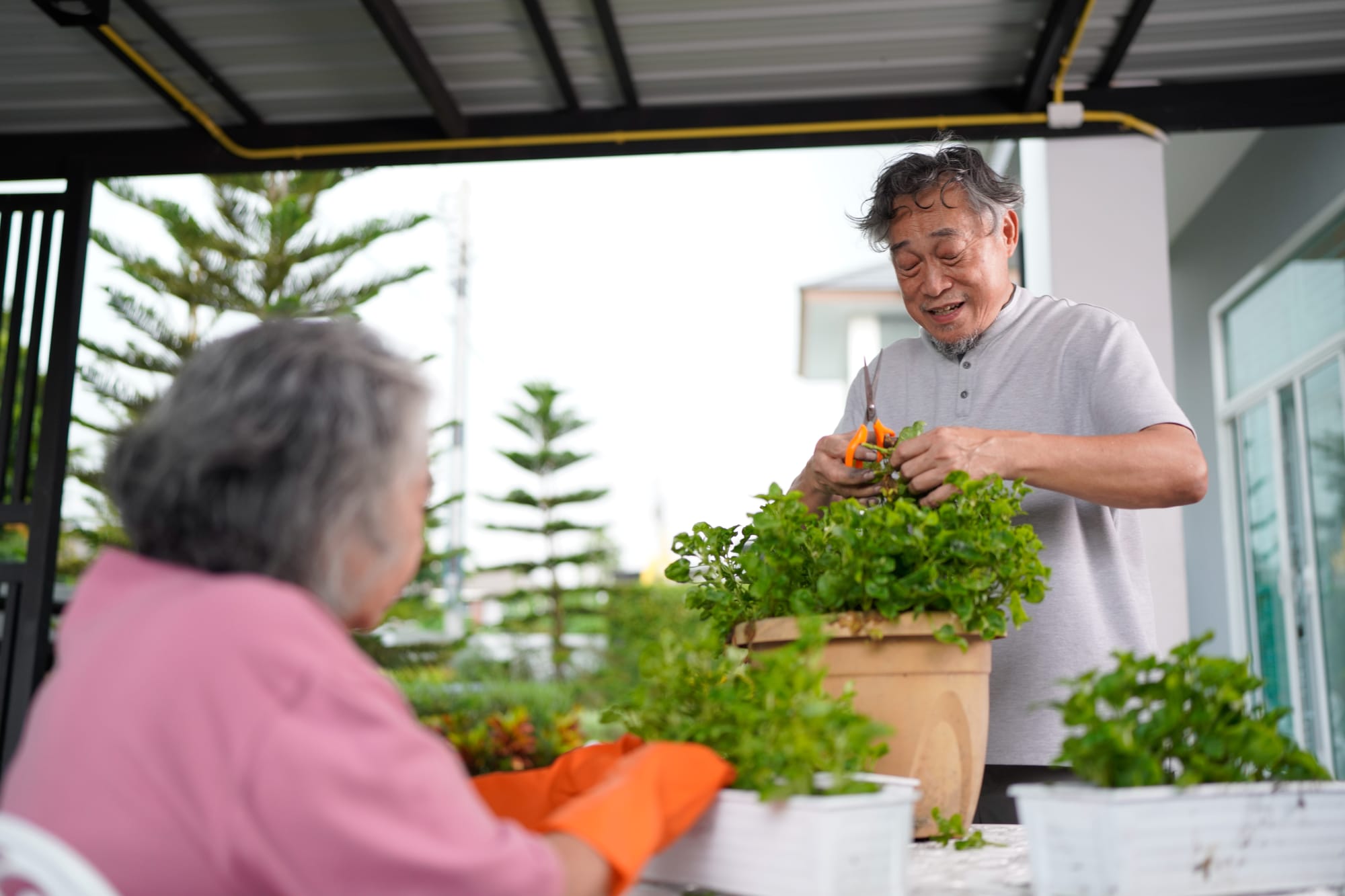From Challenges to Comfort: Palliative Care for Dementia Patients
Practical ways palliative care makes life more comfortable for dementia patients, addressing their physical and emotional needs with care.
In Blue Zones, longevity isn't just measured in years—it’s in how those years are lived. The secret lies in everyday choices: diets rooted in plants, daily physical movement woven into routine, and a strong sense of community that keeps people connected.

Blue Zones, a term coined by Dan Buettner, refer to regions of the world where people live significantly longer lives than the global average. These areas are often characterized by individuals who frequently reach the age of 100 and maintain good health well into their later years. The term 'Blue Zones' originates from the blue marker that researchers used to highlight these zones on a map.
The fascination with Blue Zones stems from the remarkable lifestyle habits of their inhabitants. In these regions, longevity seems to flourish, creating a communal aura of health and well-being. The concept invites inquiry not just into the biological aspects of aging but also the environmental, cultural, and social factors contributing to these extraordinary lifespans.

The identification of Blue Zones began with research conducted by Buettner and a team of demographers, anthropologists, and scientists. They focused on populations that demonstrated an unusually high number of centenarians. These researchers traveled the globe, piecing together commonalities among these people that transcended the mere passage of time.
Inspired by their findings, Buettner popularized the term, highlighting specific geographic areas where extraordinary health and longevity were not anomalies but rather common threads woven into the fabric of daily life. The quest to uncover the secrets of these communities has led to an explosion of interest in embracing similar practices. Notably, these explorations have revealed that the environments in which these individuals live are often as important as their personal habits, with factors like climate, geography, and community infrastructure playing pivotal roles in promoting a healthy lifestyle.
While each Blue Zone is unique, certain characteristics recur throughout these extraordinary communities. These characteristics, often interlinked, provide a glimpse into the lifestyle practices that facilitate longer, healthier lives. For instance, social networks are robust in these areas, bolstering emotional and psychological well-being.
Additionally, the diets in these zones are largely plant-based, rich in whole foods, and low in processed ingredients. Physical activity is ingrained in daily routines, transcending the need for structured exercise. The overarching theme is one of balance, community, and satisfaction, combining to foster a culture that supports longevity. In places like Okinawa, Japan, for example, the concept of "ikigai," or a reason for being, is deeply embedded in the culture, providing individuals with a sense of purpose that contributes to their overall well-being. Similarly, in Sardinia, Italy, family ties and social engagement are paramount, with regular gatherings that not only strengthen relationships but also promote a sense of belonging and support, further enhancing the quality of life as one ages.
Resources and studies have identified five distinct Blue Zones across the globe, each bursting with its own unique cultural style while sharing the common thread of exceptional longevity. These locations—Sardinia, Okinawa, Loma Linda, the Nicoya Peninsula, and Ikaria—continue to captivate researchers and health enthusiasts alike.
In order to understand how these locales maintain their remarkable health metrics, let us delve deeper into each zone and its secrets.
Sardinia is a rugged yet enchanting island in the Mediterranean, home to the largest concentration of male centenarians in the world. The mountainous terrain nurtures a lifestyle that values traditional pastoral practices. The diet consists of whole grains, vegetables, legumes, and the occasional indulgence of goat’s milk and cheese.
Moreover, the Sardinian way of life is steeped in family and community. Daily social interactions strengthen bonds, reducing stress and fostering a sense of purpose. Local customs and rituals further enhance this environment, cultivating joy in life's simplest pleasures. The island’s unique geography encourages physical activity, as residents often engage in walking and hiking through its picturesque landscapes, reinforcing their physical health alongside their social connections.

In contrast to the ruggedness of Sardinia, Okinawa presents a subtropical paradise rich in an array of flora and fauna. The Okinawan diet, sensibly rooted in vegetables, tofu, and sweet potatoes, provides nutrients fitting for longevity. One of their traditional practices is 'Hara Hachi Bu', which translates to eating until 80% full, a habit that helps in weight management and promotes overall health.
Social networks, known as moai, are integral to Okinawan culture. These lifelong friendships provide emotional support and shared resources, which are vital in overcoming life's adversities. This social structure serves as both a protective factor against loneliness and a source of collective joy. Additionally, the practice of engaging in regular physical activity, such as gardening and martial arts, contributes to not only their physical fitness but also to their mental well-being, creating a holistic approach to health that is deeply embedded in their way of life.
Known as a hub for the Seventh-day Adventist community, Loma Linda is the only Blue Zone in the United States. These residents often follow a vegetarian diet that emphasizes healthful practices. Their focus on organic fruits, vegetables, nuts, and grains fosters a nutritious framework for lifestyle choices.
In addition to dietary habits, the community thrives on spirituality and social connections. Sabbath observance encourages individuals to rest and reflect, thus minimizing anxiety and giving way to a sense of purpose that transcends mere existence. The emphasis on community service and volunteerism also plays a significant role in their longevity, as helping others fosters a sense of belonging and fulfillment, which is essential for mental and emotional health.
The Nicoya Peninsula is a stunning expanse of tropical beauty where the sun shines brightly, both literally and metaphorically. A diet rich in beans, corn, and fruits, combined with an active lifestyle steeped in manual labor and outdoor activities, sets the stage for an energized existence.
Family dynamics play a powerful role in the lives of Nicoyans. Frequent interactions and gatherings establish strong support systems, making their experience of aging a communal journey rather than an isolated endeavor. Here, the sheer joy of connection acts as a powerful antidote to the loneliness often experienced with age. The cultural practice of storytelling and sharing life experiences among generations not only preserves their rich heritage but also strengthens familial bonds, ensuring that wisdom and traditions are passed down through the ages.
Ikaria, an island nestled in the Aegean Sea, is famous for having one of the highest rates of longevity in the world. The Ikarian diet, heavy in vegetables, whole grains, and healthy fats from olive oil, coincides beautifully with an active lifestyle laden with social engagements.
Another critical aspect of Ikarian life is the importance placed on rest. Islanders often take afternoon naps and are unhurried in their daily pursuits, emphasizing well-being over efficiency. Here, stress is countered by time spent in nature and with loved ones, creating an idyllic space for aging gracefully. The community's approach to life is also characterized by a strong connection to their land and traditions, with many residents practicing agriculture and foraging, which not only ensures access to fresh produce but also fosters a deep appreciation for their environment and its resources.
As we glimpse into the heart of Blue Zones, a pattern of lifestyle habits emerges—woven not by chance, but by the deliberate choices that sustain health and longevity. These practices offer compelling clues on how anyone, no matter where they live, might enhance their quality of life. By observing these shared traits, we can begin to integrate habits that not only extend our years but enrich them.
This version is more fluid and avoids abstract phrases like "extract the essence," which can feel overly formal. Instead, it focuses on direct yet thoughtful language, making the ideas more accessible.
The cornerstone of health among Blue Zone populations lies in their dietary patterns, which favor plant-based foods, healthy fats, and a wide array of fresh produce. The predominant absence of processed foods contributes significantly to lower inflammation and reduced risk of chronic diseases.
Many Blue Zone diets also incorporate moderate alcohol consumption, often in the form of red wine. This practice, when coupled with meals and social settings, fosters a sense of conviviality and cultural richness, essential elements in many of these communities.
Despite the modern emphasis on structured exercise regimens, individuals in Blue Zones engage in daily movement that feels organic and enjoyable. Gardening, walking, and communal activities integrate physical activity seamlessly into their daily routines, avoiding the perception of traditional workouts as a chore.
This approach underscores a larger principle: that movement should be engaging and enjoyable, motivating individuals to remain active without the constraints often associated with conventional exercise programs.
Crucially, social networks are a profound determinant of well-being across Blue Zones. The power of community manifests through strong social ties that alleviate stress, promote gratitude, and bolster emotional resilience. In these zones, social gatherings play an integral role in the fabric of daily life.
The collective ethos fosters mutual support during times of need, enhancing the understanding that aging is a shared journey. This sense of belonging plays a vital part in shaping their emotional and physical health.

A profound sense of purpose or 'Ikigai', especially pronounced in Okinawa, permeates the lives of individuals in Blue Zones. Knowing that one has a reason to wake up each day fuels a positive outlook, contributing to life satisfaction and overall health.
"Ikigai" is a word the Okinawans have given to something both simple and astonishingly powerful: a reason to get up in the morning. It’s more than a sense of purpose; it's the quiet assurance that your life, on this day, has meaning. In Okinawa, this idea permeates the lives of people who, statistically, have more of those days than almost anyone else in the world. But the true beauty of ikigai is that it’s not tied to grand, life-changing ambitions. It’s woven into the ordinary, the humble moments that offer a sense of belonging, usefulness, and joy.
Let’s dive a bit deeper into what makes ikigai so essential to the longevity and health observed in places like Okinawa. First, there’s the idea that it provides emotional ballast. In an age of growing restlessness and existential dread, ikigai acts like an anchor—holding people steady in the present, even as they remain excited for the future. There’s something crucial about waking up each morning knowing that your day holds something of value, whether it’s tending a garden, meeting a friend for tea, or helping raise a grandchild. It might sound small, but in a world where many people sleepwalk through life, those small acts become monumental.
When we talk about health and longevity in Blue Zones, we aren't just admiring a collection of impressive statistics. We’re witnessing living proof that the way we choose to live—how we move, eat, connect with others, and make meaning of our days—has tangible effects on the quality and length of our lives. Let’s dig deeper into these outcomes, which aren’t just about extending life but making those extra years truly worth living.
In most of the world, chronic diseases like heart disease, diabetes, and cancer have become grim inevitabilities, waiting for us in the future like unwanted milestones. But in Blue Zones, people have rewritten this script. Heart disease is rare. Diabetes doesn’t hold the stranglehold it does in many other places. Cancer rates are notably lower. This isn’t because the inhabitants have won some genetic lottery—it’s because their way of life actively shields them from these modern afflictions.
What’s the secret? First, healthy food is not just something to eat; it’s part of the culture. Diets in Blue Zones are rich in plants, legumes, whole grains, and healthy fats. Meat is a rare guest at the table, not a staple. Meals aren’t mindlessly consumed; they’re part of a larger social ritual. Portion sizes are smaller, and there’s often a focus on stopping when 80% full—a concept known in Okinawa as "hara hachi bu." It’s not a diet plan, but a lifestyle built around respect for one’s body and one’s food.
Beyond what they eat, the inhabitants of Blue Zones move. But they’re not spending hours in gyms. Physical activity is a simple part of daily life—walking to visit a neighbor, tending to a garden, or simply doing chores. In our world where sedentary lifestyles have become the standard, people in Blue Zones are constantly in motion, which keeps their bodies healthier and staves off the chronic diseases that plague much of the developed world.
The absence of these diseases doesn’t just extend life; it enriches it. Without the looming specter of illness, people are free to engage fully in their communities and in their personal pursuits. There’s a certain freedom in knowing that your body isn’t an obstacle to be managed, but a vessel that can carry you through life’s many stages with grace.

If you were to visit Sardinia, Okinawa, or Nicoya, you might be surprised to meet people who are 90 or even 100 years old and still active, mentally sharp, and deeply involved in their communities. These aren’t outliers—they’re the norm. Life expectancy in Blue Zones far outstrips global averages, but the real magic lies in how these years are lived.
Living longer doesn’t mean much if those added years are spent in decline. But in Blue Zones, longevity is paired with vitality. It’s not uncommon to see nonagenarians and centenarians walking unaided, engaging in conversation, and contributing meaningfully to their families and communities. They don’t just live longer—they live better.
What’s more, their longevity isn’t some accident of biology. It’s a direct result of choices made over a lifetime. The focus on healthy eating, daily movement, and strong social connections creates a feedback loop that sustains both physical and mental health. The mind stays sharp because the body is cared for, and the body thrives because the mind remains engaged. It’s a kind of symbiosis, where health begets more health.
There’s also something to be said about how aging is viewed in Blue Zones. In many parts of the world, getting older is often seen as a burden, both to the individual and to society. But in Blue Zones, aging is not a decline—it’s a continuation of life, with each stage offering new opportunities for growth and contribution. Elders are respected, often holding central roles in their families and communities. They’re not sidelined but celebrated for their wisdom and experience.
This respect for age, combined with a lifestyle that promotes health, means that people in Blue Zones don’t just live long—they enjoy it. Their later years are marked by purpose, connection, and engagement. Whether it’s through maintaining a garden, caring for grandchildren, or simply being a source of wisdom within the community, these individuals live with a sense of fulfillment that many younger people in other parts of the world would envy.
So, what can we take away from this? These outcomes offer more than a passing glimpse at how a few lucky people live; they provide a roadmap for the rest of us. The principles behind Blue Zone longevity aren’t inaccessible—they’re grounded in everyday actions and attitudes that anyone can adopt.
Eat well, move often, stay connected, and find purpose. It’s simple, really. But in a world that constantly pushes us toward convenience, speed, and isolation, these simple truths have become revolutionary. What Blue Zones teach us is that living well isn’t just about adding years to our life—it’s about adding life to our years.